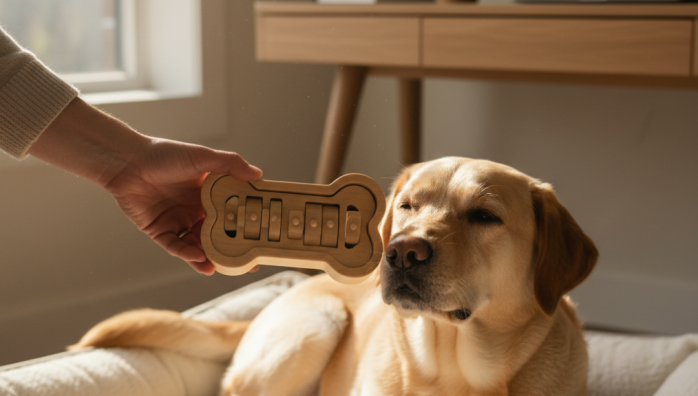Calming Your Pet's Separation Distress
by admin in Pet Care Basics 19 - Last Update November 25, 2025

When I first transitioned to working from home, I honestly thought it would be the ultimate gift for my dog, Charlie. Constant companionship, endless belly rubs between meetings... what could be better? The harsh reality hit me a few months in when I tried to run a simple errand. The whimpering, the frantic pacing by the door, the sheer panic in his eyes—it was heartbreaking. I realized that in creating a constant-presence paradise, I had accidentally cultivated a new, intense form of separation distress. This is a story I hear all the time now from fellow remote workers, and it\'s a challenge we need to address with patience and understanding.
The paradox of the remote work pet
The core of the problem, as I came to understand it, is the complete shattering of their old routine. For years, Charlie knew I\'d leave in the morning and come back in the evening. Now, my presence is the default, and any departure is a jarring anomaly. It’s not just about being left alone; it\'s the unpredictability of it all. A quick trip to the post office becomes as stressful for him as a full day away used to be. Recognizing this was my first \'aha\' moment—it wasn\'t that he was being \'bad,\' it was that his world had been turned upside down, and he needed my help to make sense of it.
My gentle approach to rebuilding independence
I knew I couldn\'t just go back to the old ways. I had to gently re-teach Charlie that being alone is safe and okay. Here’s what I focused on, and it made all the difference over time.
Practicing \'benign departures\'
My first step was to desensitize him to my departure cues. I’d pick up my keys and then just sit on the sofa. I\'d put on my coat and then walk to the kitchen to get a glass of water. The goal was to break the association that \'keys + coat = abandonment\'. I also started practicing leaving the room I was working in for just a minute or two, then returning calmly without a fuss. We slowly worked our way up to me being on the other side of the front door for 30 seconds, then a minute, and so on. It was a slow process, but it was crucial for rebuilding his confidence.
Creating a \'calm down\' sanctuary
I dedicated a corner of our living room as Charlie’s \'sanctuary\'. It has his comfiest bed, a blanket that smells like me, and his favorite safe chew toys. Crucially, this is where he gets his most high-value treats, like a puzzle feeder filled with something extra tasty. I started giving him these special treats *only* when I was practicing my short departures. He began to associate my leaving with getting the best thing in the world, which started to shift his emotional response from panic to anticipation.
Enrichment is your most powerful tool
I can\'t stress this enough: a mentally tired dog is a calm dog. Before I need to leave the house, I make sure Charlie has had a good walk, but more importantly, some \'brain work\'. This has been a game-changer for us.
- Scent games: Hiding treats around the room for him to find engages his natural instincts and focuses his mind.
- Food puzzles: Instead of feeding him from a bowl, I use puzzle toys that make him work for his meal. This occupies him for a good while.
- Long-lasting chews: A safe, long-lasting chew can keep a dog happily occupied, but this is something you need to be confident your pet is safe with.
These activities help burn off nervous energy and redirect his focus. When I finally do have to leave, he\'s often already in a more settled and relaxed state of mind. Of course, every pet is different, and what worked for Charlie might need tweaking for yours. If you\'re struggling, or if your pet\'s anxiety is severe and involves destructive behavior, I wholeheartedly recommend speaking with your veterinarian. They can rule out any underlying health issues and refer you to a certified animal behaviorist for a tailored plan. It\'s about finding what makes your beloved companion feel secure in this new normal we\'ve created.














